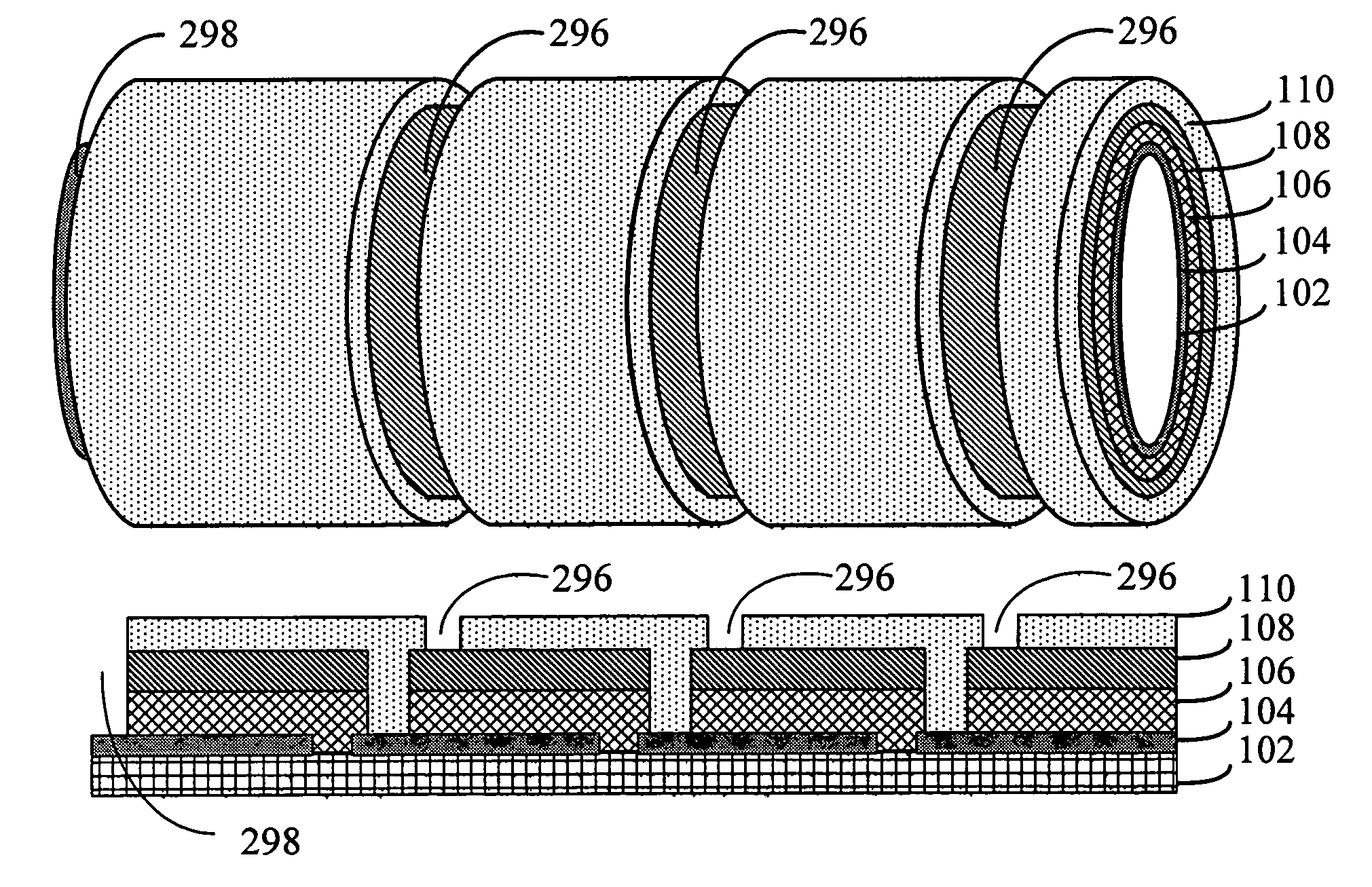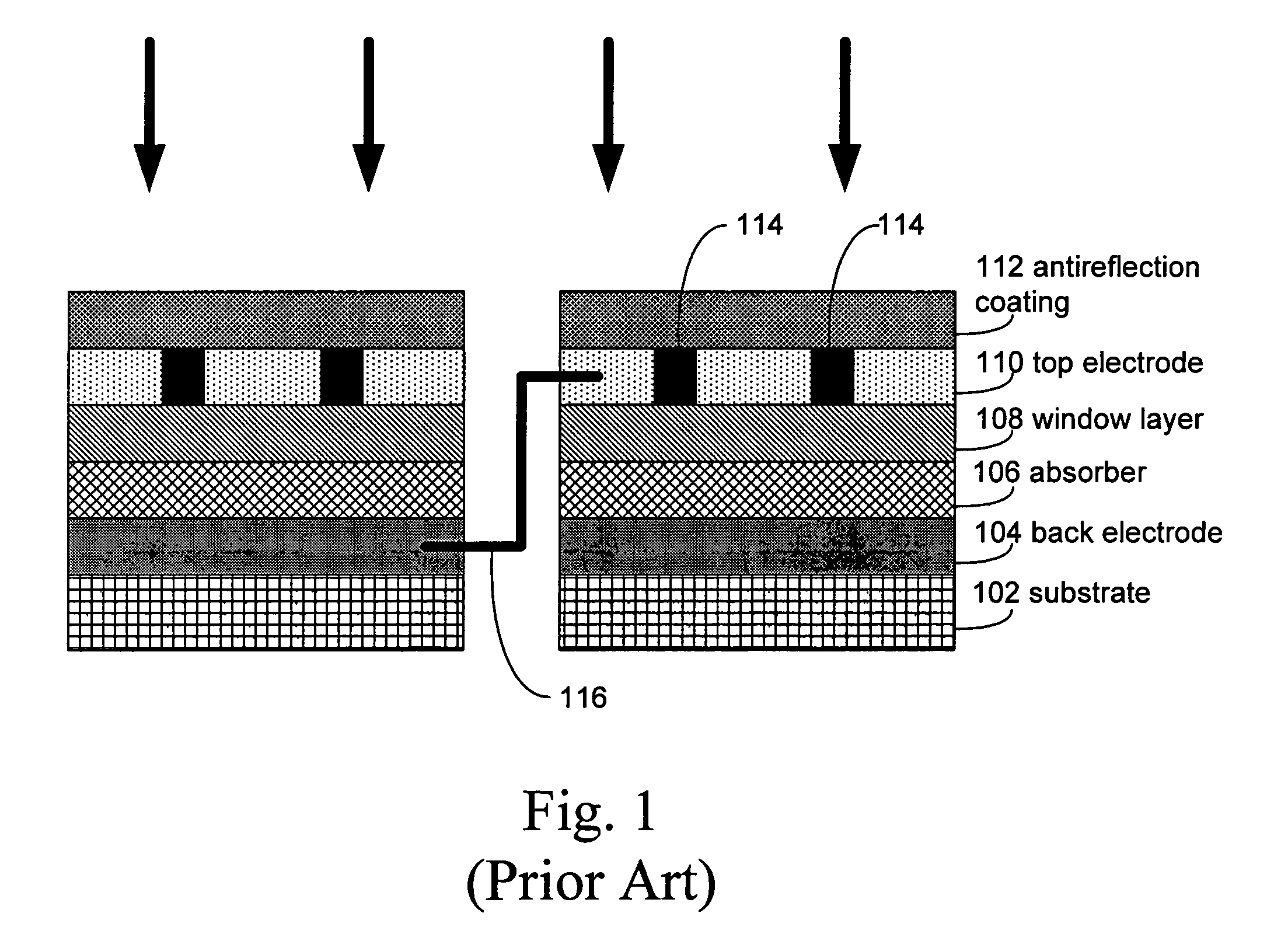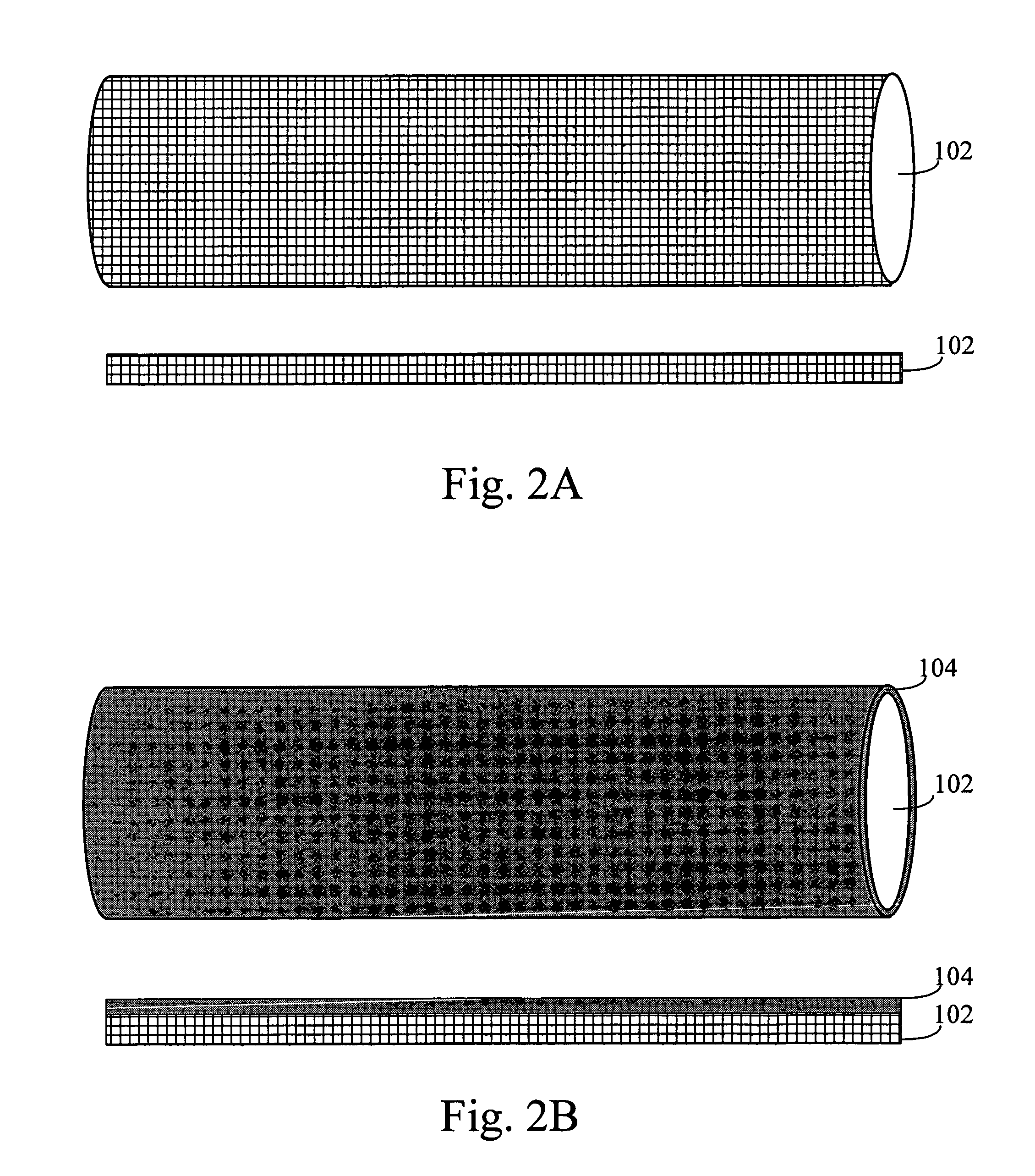Monolithic integration of cylindrical solar cells
- Summary
- Abstract
- Description
- Claims
- Application Information
AI Technical Summary
Benefits of technology
Problems solved by technology
Method used
Image
Examples
Embodiment Construction
[0041]Disclosed herein are solar cell units comprising a plurality of photovoltaic cells linearly arranged on a substrate in a monolithically integrated manner.
5.1 Basic Structure
[0042]FIG. 7 illustrates the cross-sectional view of an exemplary embodiment of a photovoltaic cell 700. In some embodiments, a solar cell unit comprises a plurality of photovoltaic cells 700 linearly arranged on substrate in a monolithically integrated manner. In some embodiments, the substrate is either (i) tubular shaped or (ii) a rigid solid rod shaped. In some embodiments the substrate is flexible tubular shaped.
[0043]Substrate 102. A substrate 102 serves as a substrate for the solar cell unit. In some embodiments, substrate 102 is either (i) tubular shaped or (ii) a rigid solid rod shaped. In some embodiments substrate 102 is any solid cylindrical shape or hollowed cylindrical shape. When substrate 102 is tubular shaped it can be either rigid or flexible. For example, in some embodiments substrate 102...
PUM
 Login to View More
Login to View More Abstract
Description
Claims
Application Information
 Login to View More
Login to View More - R&D
- Intellectual Property
- Life Sciences
- Materials
- Tech Scout
- Unparalleled Data Quality
- Higher Quality Content
- 60% Fewer Hallucinations
Browse by: Latest US Patents, China's latest patents, Technical Efficacy Thesaurus, Application Domain, Technology Topic, Popular Technical Reports.
© 2025 PatSnap. All rights reserved.Legal|Privacy policy|Modern Slavery Act Transparency Statement|Sitemap|About US| Contact US: help@patsnap.com



